The eastern tent caterpillar is of some importance as a pest because it defoliates ornamental trees. These webs are used to protect the caterpillars from predators and the elements.
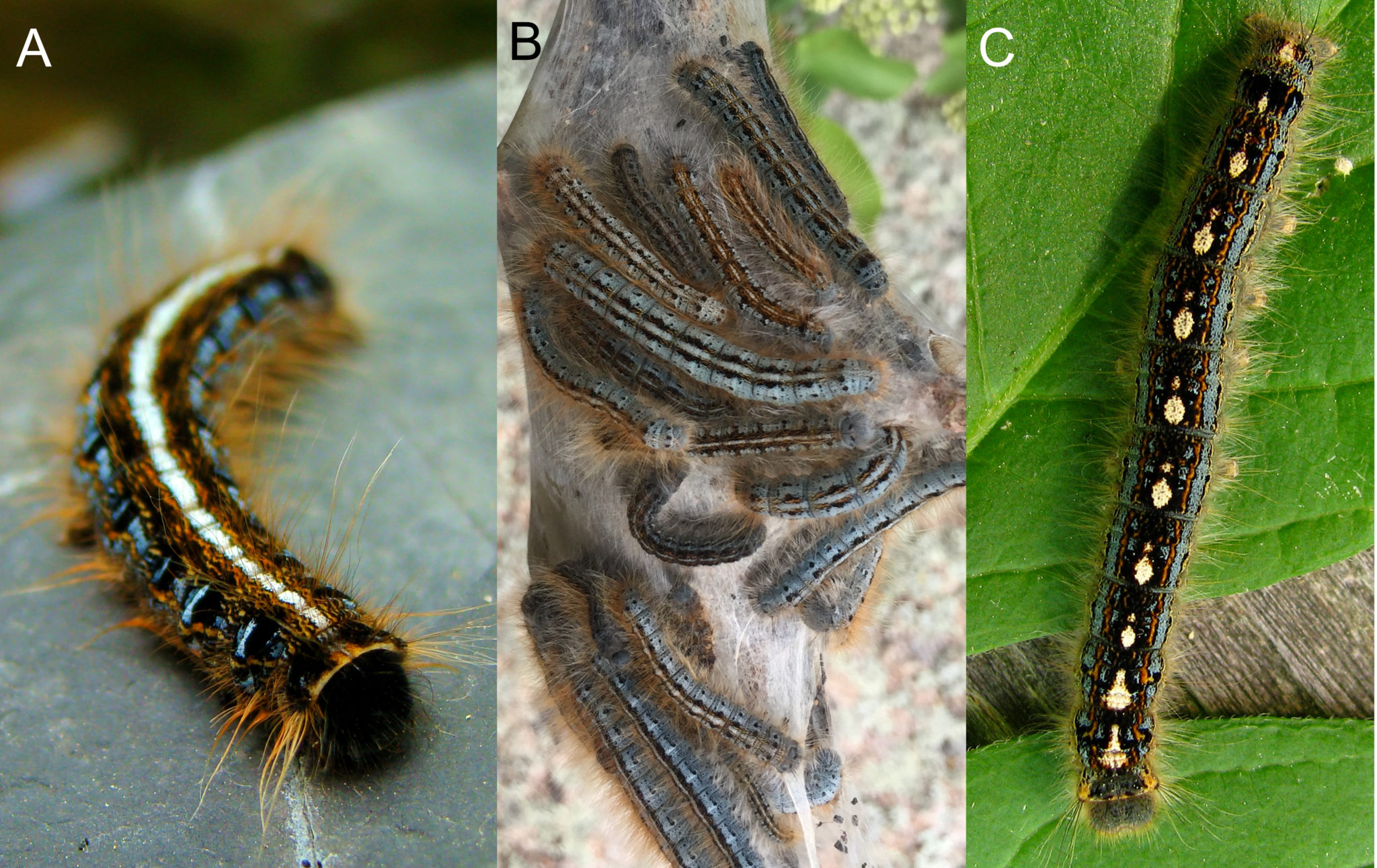 The Return Of Tent Caterpillars What S It Means For Your Yard Purdue Landscape Report
The Return Of Tent Caterpillars What S It Means For Your Yard Purdue Landscape Report
The silken sheets they make have pheromones that serve as social cues helping them move around with ease.
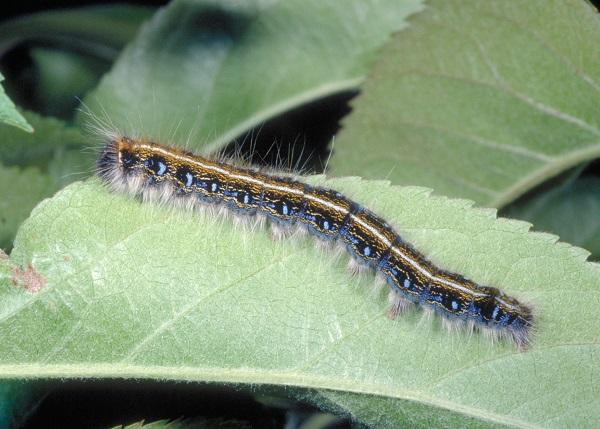
Tent caterpillar lifespan. White silken tents in the branches of host plants provide evi-dence of western tent caterpillar presence in spring. All tent caterpillar species have one generation per year. Eastern tent caterpillar webs are built in the crotch and the forks of the host plants limbs.
You can poke holes in the tents with a stick or long-handled apple picker and then twist to gather up caterpillars and webbing. Also the eastern tent caterpillar begins building webs earlier in the growing season than forest tent caterpillars and is among the first insects to come out of their overwintering. Adult forest tent caterpillar moths have a short 510 day lifespan Fitzgerald 1995 and even a short post-mating refractory period could significantly impact the likelihood that a mated male moth would orient to pheromone and be captured in a pheromone-baited monitoring trap.
Larvae live and feed as a colony enlarging the tent as. Larvae do not construct tents Life stage Length of time per individual Time of year Larva Caterpillar Pupa Cocoon Adult Moth 5 days July Egg Egg mass 5-6 weeks Early spring June 3 weeks June 10 months July - early spring. This sort of data can be useful in seeing concentrations of a particular species over the continent as well as revealing possible migratory patterns over a species given lifespan.
You may encounter three species of tent caterpillar in Indiana. A single egg mass results in 50 200 larvae at a time and they mostly move along in a colony throughout this period. Larger nests can be removed by winding them around a stick or pruned out and destroyed.
Some years are definitely worse than others for tent caterpillar infestations. They are black with white keyhole-shaped spots along their back. Immature tent caterpillars are colorful and about 1¾ inches long when fully grown.
Forest tent caterpillar Malacosoma disstria Western tent caterpillar M. Egg cases can be seen easily once leaves drop from trees in fall. Californicum and eastern tent caterpillar M.
The forest tent caterpillar larvae also have a white hairy body with the matured ones growing to 5 65 cm long. When tent caterpillar removal is necessary the nests or egg cases can usually be picked out by hand. Life CycleWestern tent caterpillar has one generation per year.
They have a few long hairs on their bodies mostly along the sides. The life cycle starting with the cocoon spinning and ending with the cocoon part of the cycle again. Eastern Tent Caterpillar Malacosoma americanum Found east of the Rockies and north into southern Canada.
Gypsy moth caterpillars do not produce a web which distinguishes it from web-making caterpillars such as the Eastern tent caterpillar Malacosoma americanum and the fall webworm Hyphantria cunea. Older caterpillars are approximately 15 to 20 inches long. Adults live for only a few days during which they mate and lay eggs and do not feed.
They feed on cherry apple plum willow birch poplar and oak trees. Although tent damage is unsightly infestations rarely threaten the lives of trees. Full grown caterpillars 2 inches long are sparsely hairy and black in.
The webs made by tent caterpillars function as greenhouses that help these early-season feeders stay warm so disturbing the web puts substantial stress on the colony. Every 9-16 years the tent caterpillar. All three species live in groups of anywhere from 40 to 200 individuals that stay together until shortly before they pupate.
The effect of mating on subsequent capture in pheromone-baited. The Western Tent Caterpillar is yellowish-brown with a row of blue and orange spots along their back. The Eastern Tent Caterpillar dark and hairy are popping up all over the state in recent weeks.
These are generally visible shortly after bud burst. Damaged trees however typically recover and refoliate within several weeks. Four species are commonly discussed.
The best time for tent caterpillar removal is early morning or evening while theyre still likely to be in the nest. Our Malacosoma tent caterpillars are native forest pests and despite their voracious appetites our forest trees can usually recover from the damage they inflict. Tent caterpillar outbreaks are cyclical some years worse than others.
Heres what you need to know about these insects if they are. The map below showcases in blue the states and territories of North America where the Forest Tent Caterpillar Moth may be found but is not limited to. The Forest Tent Caterpillar is similar looking to the Eastern Tent Caterpillar.
The picture on the right shows a caterpillar in the process of turning into a pupa. They will stay and transform over time into a butterfly or a moth.
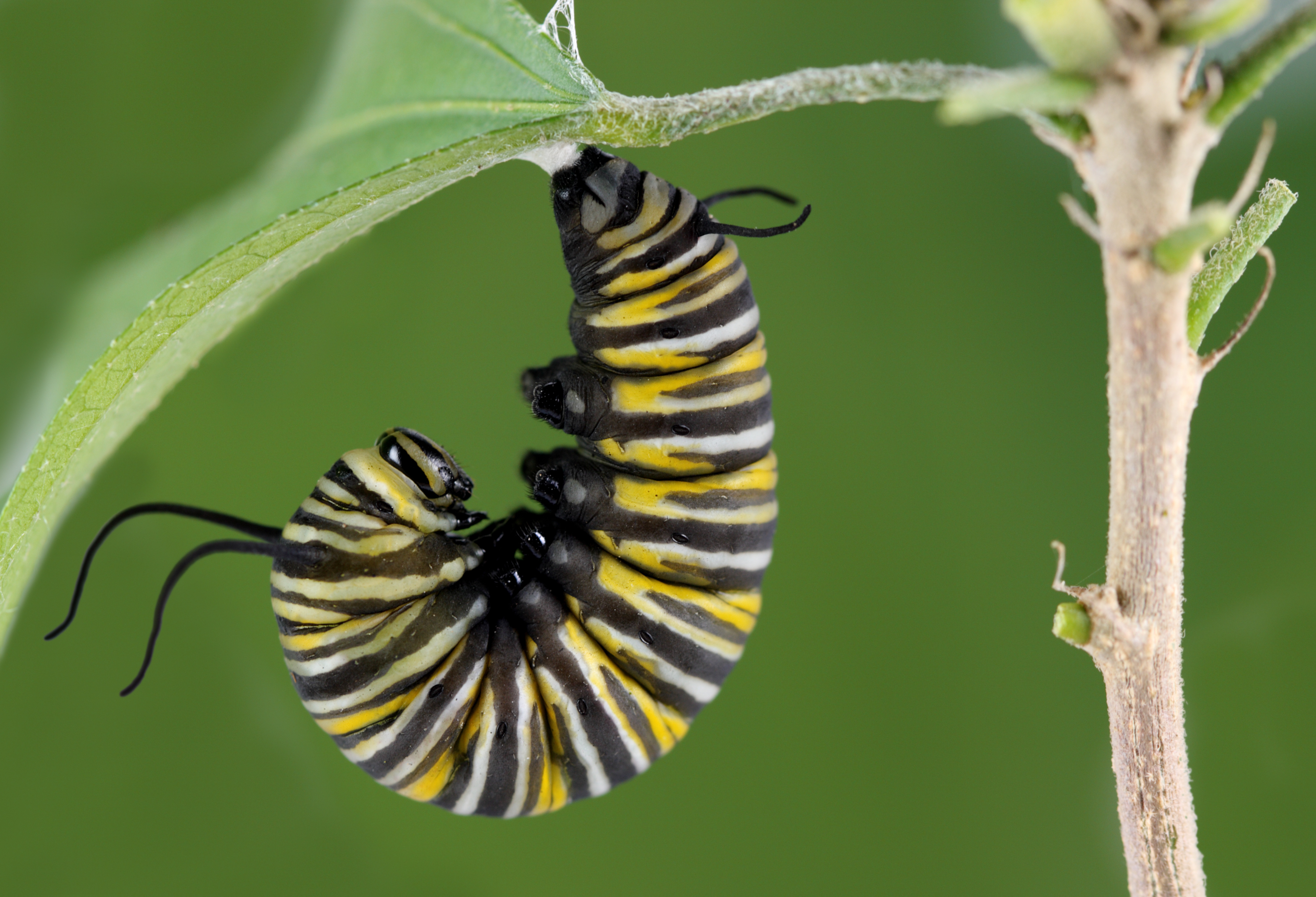
Just before the caterpillar pupates shedding its skin for the fifth time its tentacles look wrinkled and crinkled like they do in the photo to the right.
How long does a caterpillar hang before cocooning. The chrysalis starts out soft and skin-like but gradually hardens to form a protective shell. When the Monarch caterpillar gets ready to pupate it will spin silk attach itself and hang head-down in a J shape. The rest can happen in a matter of minutes.
They will stay and transform over time into a butterfly or a moth. It can take about four weeks in the peak of the summer in warmer climates. They hatch into baby caterpillars also called the larvae.
Caterpillars build a cocoon before the winter and live in them through the winter. When the caterpillar of a moth species is ready to transform itself into the adult winged moth it spins a cocoon. When this point is reached the caterpillar will replace its skin with a larger one capable of housing further growth.
Caterpillars emerge from the eggs and eat for 10 to 12 days before forming chrysalides. Within its protective casing the caterpillar radically transforms its body eventually emerging as a butterfly or moth. Click to see full answer.
A moth hatches from a cocoon or pupa. When the caterpillar is fully grown it will find a suitable place to make its chrysalis. While in the pupal stage they go through a transition called metamorphosis.
Once your caterpillar enters a cocoon it usually takes 10--14 days for them to make the change and emerge as a butterfly but different species may take longer or shorter periods of time. It spends approximately 18 hours in this position depending on environmental factors. This is a pod made from silk that hardens to protect the caterpillar as it makes its transition.
Do caterpillars need water. So while a moth or butterfly may not remember being a caterpillar it can remember experiences it learned as a caterpillar. Subsequently one may also ask how long does it take for a caterpillar to pupate.
Adult butterflies emerge from the chrysalides in 7 to 10 days. It takes about four days for the eggs to hatch. A caterpillar does not hatch from a cocoon but from an egg.
The caterpillars skin is shed for the last time as it passes from the larval caterpillar stage to the pupa stage of. How long does a caterpillar live before cocooning. Shortly before its final molt the caterpillar will straighten some and the antennae will become ragged rather than the normally rigid appearance.
What do different caterpillars turn into. For butterflies the process is conducted in a chrysalis or pupa. Caterpillars who have gone into their dangling J in preparation for pupation may not be able to reattach after disturbance.
One day the caterpillar stops eating hangs upside down from a twig or leaf and spins itself a silky cocoon or molts into a shiny chrysalis. The caterpillar will stay like this for around 24 hours. When the caterpillars are full grown after about 2 months of eating leaves they find a place to hide and transform into the pupal stage.
What you do is set yourself up with a good book a comfy chair a cup of coffee or whatever beverage you. Others create a silk hammock to support their chrysalis. Most butterflies and moths stay inside of their chrysalis or cocoon for between five to 21 days.
Between five to 21 days. A gypsy moth pupa is shown on the right. They survive as long as its in a good place that is well protected from wind rain and harsh temperatures.
The time spent in the cocoon varies from 10 days. Five to 21 days. Instead of hanging upside down some make a silk sling from a tree branch to support themselves as they pupate right-side up.
This would unfortunately lead to an early death instead of ongoing transformation. One day the caterpillar stops eating hangs upside down from a twig or leafand spins itself a silky cocoon or molts into a shiny chrysalis. The process from egg to butterfly is weather dependent and also depends on the regional climate.
Five to 21 days Butterflies make a chrysalis while other insectslike the tobacco hornworm caterpillarmakes a cocoon and becomes a moth. Most butterflies and moths stay inside of their chrysalis or cocoon for between five to 21 days. How long does it take to go from caterpillar to butterfly.
The J stage is temperature dependant and can range from approximately 8-36 hours. Often moth caterpillars spin a. Then you will notice the caterpillar nibbling under its chin and the beginning of the split takes place.
Link to larger image. Furthermore how long does a caterpillar live before cocooning. The caterpillar allows itself to drop and then it hangs there upside down in a J-shape for about one full day.
It will attach a wad of silk and hang from it upside down in a J. Butterflies make a chrysalis while other insectslike the tobacco hornworm caterpillarmakes a cocoon and becomes a moth. The two images above and the four below show the Emperor Moth Saturnia pavonia caterpillars growing from a few millimetres soon after they hatch to 65mm and fully grown in little more than two months.
Other caterpillars use variations on this process when they pupate.
How long does a caterpillar stay as a caterpillar. The time it takes for a caterpillar to pupate varies widely according to species.
 Caterpillar To Butterfly Life Cycle Youtube
Caterpillar To Butterfly Life Cycle Youtube
The woolly bears longevity comes from its arctic habitat which causes it to spend most of its life frozen in stasis.
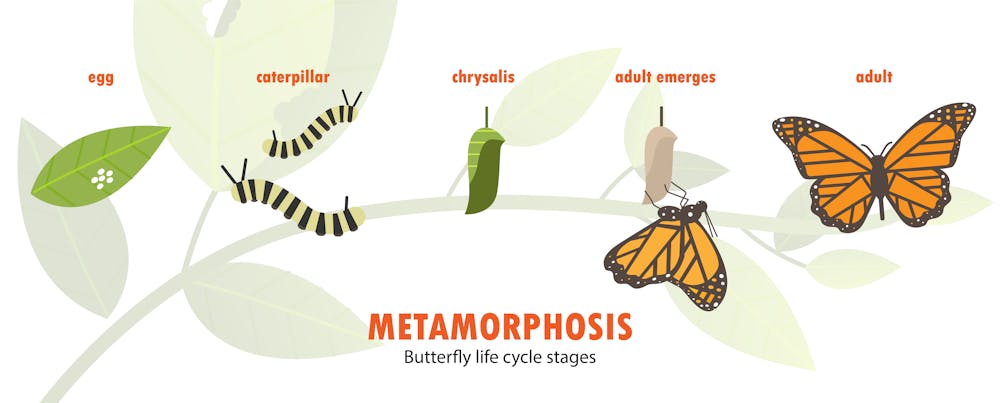
How long a caterpillar live. Afterward the caterpillar exhales the air to allow for more growth. What do Caterpillars Eat and Drink. Usually a caterpillar lives for several weeks.
Sometimes they use systemic pesticides that remain in the plants for a very long time afterward affecting new growth as well as the leaves that were present when the plant was sprayed. Caterpillar containers always need to be moved to an unheated area for the winter and this is most important for caterpillars that pupate. However depending on the type of butterfly and the environmental conditions it can develop from several days to several years.
The caterpillar cycle of molting generally undergoes four to five instars depending on the species of butterfly. Caterpillars of Ochrogaster lunifer marching off to pupate. Once your caterpillar enters a cocoon it usually takes 10--14 days for them to make the change and emerge as a butterfly but different species may take longer or shorter periods of time.
You can keep the fully-grown butterflies in the habitat for a few days. The arctic-dwelling woolly bear caterpillar holds the record for the longest larval stage and spends up to 14 years as a caterpillar. The time of daily activity of caterpillars depends on the type and stage of development.
3 Essential Caterpillar Needs. Most caterpillars stay in their chrysalis for about 5-21 days before emerging as an adult butterfly. Many caterpillars are fully grown and ready to pupate within a few weeks of hatching from an egg such as the Painted Lady Vanessa.
Do you mean how long does a caterpillar live for before it turns into a moth or butterfly or are you including this stage in the life cycle. The caterpillar is the second phase in the life cycle of a butterfly. Within the span of a few weeks the caterpillar.
How long do Caterpillars live Before Forming a Pupa After hatching from the egg it takes about two weeks for a larva to grow to its full size about 2 inches long before it is ready to form a pupa or chrysalis. Several species of Hawaiian moth caterpillars of the genus Hyposmocoma are amphibians and are able to live both under water and on land. Caterpillars Increase Their Body Mass by as Much as 1000 Times or More.
It was described under Eogeometer vadens. If you found it on a plant then it almost certainly eats the leaves from that plant. Your caterpillars will take about 3 weeks to grow into butterflies.
Be careful about buying plants from a nursery for caterpillars - many of the plants are treated by the nursery or the growers or both with pesticides to keep them looking pretty for the customers. The eggs are tiny and unremarkable and the baby caterpillars are very small and defenseless. Different species have different periods in this cycle as Caterpillars.
How long do Caterpillars live. Caterpillars are one of four stages in the life of a butterfly or moth. Pupae are especially sensitive to changing weather conditions so you must choose their location wisely.
Most caterpillars hide in shelters during the day and only feed at night. The stage of the caterpillar is especially tight for high-altitude and polar butterflies as well as for satyrs and wood-dwellers. Significant changes happen in them quickly as they transform from caterpillars to butterflies.
Additionally the caterpillar stages of instars usually last from 10 to 21 days. A good way to prolong the life of the food supply is to place it in a glass jar of water inside the caterpillars homeThe water will keep the leaves fresh and green for longer. Caterpillars are also found in dark places like long grass.
However sometimes caterpillars can fall off the leaves into the glass jar and drown. The other phases include eggs first phase pupae third phase and the butterfly fourthfinal phase. Caterpillars need to have an appropriate place to live.
Given below is the life cycle of a caterpillar in detail. Caterpillars live mostly in hedges and bushes. There are dozens and dozens of eggs laid by every adult and most of the baby caterpillars are eaten by birds or ants long before they grow up.
This can take weeks. In cool climates most species of Lepidoptera have an annual cycle. Even on a cold winter day a container can warm up.
Previously another fossil dating back approximately 125 million years was found in Lebanese amber. Let your caterpillar live its life and develop on its own schedule. They arent exactly born -- they hatch out of eggs laid by the adult.
Butterflies live a short life. If it was on the ground then its a little more complicated. The larval stage of the life cycle is all about growth.
In 2019 a geometrid moth caterpillar dating back to the Eocene epoch approximately 44 million years ago was found preserved in Baltic amber. They can often be found in a garden or backyard where they live on the underside of leaves of their host plants to hide from predators. If you are going to store your pupae or caterpillars outdoors be sure to keep them out of the sun.
The insect will remain in the larval stage as a caterpillar for only about two weeks before it transforms into a moth or. To prevent this stuff cotton wool or paper towel around the stems of the leaves. For example caterpillars of the gypsy moth at the first ages are active mainly during the day and at late ones at night.
This will keep your caterpillar safe. From birth to butterfly to death a caterpillar will live for about a year. These are tuned to the progress of the seasons in the area where they live.
The time taken for a butterflys life cycle to be completed could be anything from a single month to a complete year.
The Monarch Life Cycle technically called metamorphosis is the series of developmental stages that insects go through to become adults. While yet inconclusive current research indicates that monarchs raised without the.
 Chrysalides The Good And The Bad The Butterfly Musketeers
Chrysalides The Good And The Bad The Butterfly Musketeers
It takes a Monarch butterfly just 28 to 32 days to complete its life cycle.
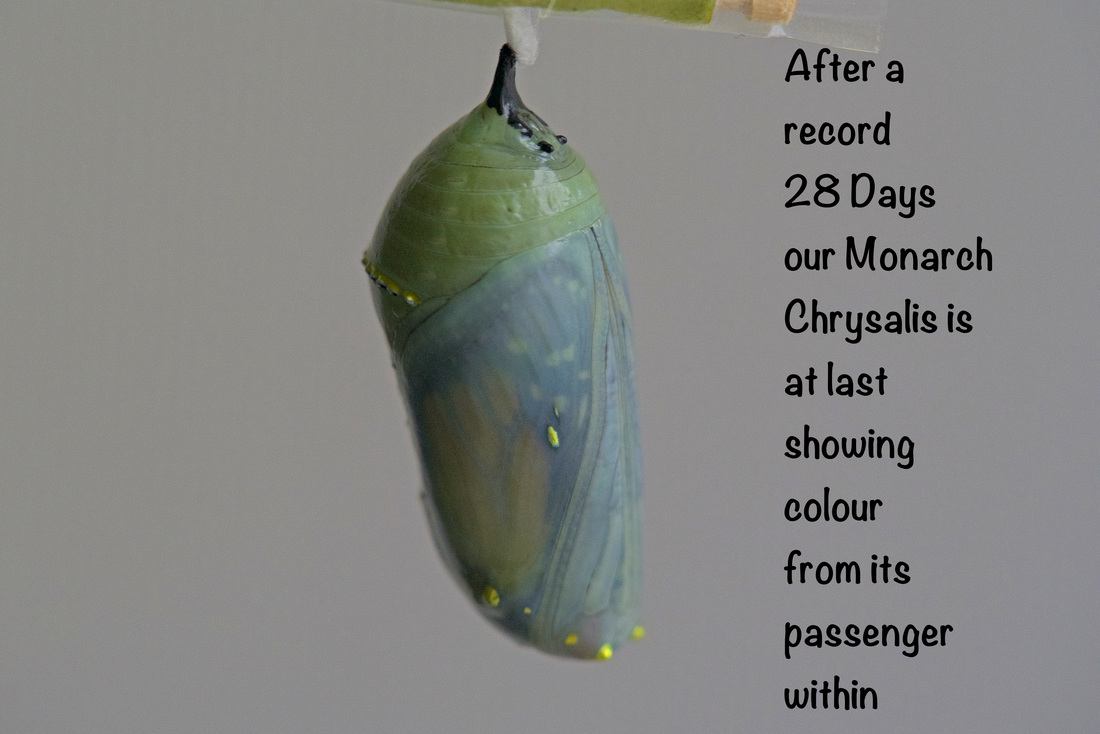
How long does a monarch caterpillar stay in a chrysalis. In this regard how long does it take for a caterpillar to form a chrysalis. Most butterflies and moths stay inside of their chrysalis or cocoon for between five to 21 days. Its estimated that in two weeks the caterpillar will be 3000 times larger than the day it hatches.
YouTuber Allen Miller filmed this video in real time six minutes that showcase the larva caterpillar to pupa chrysalis transformation. Read more on it here. This is the finished product at least for the caterpillar stage.
Dont raise monarchs completely inside. Sickly caterpillars may form nonviable chrysalides or disease parasites or pests may attack the chrysalis after formation. Light temperature and humidity all play an.
39 Related Question Answers Found What is the gold on a monarch chrysalis. Once the caterpillar hatches it grows rapidly. The pupa of a butterfly is called a chrysalis rather than a cocoon.
The J phase of a Monarch caterpillar doesnt last long about 10-12 hours depending on the temperature. Monarch caterpillars shed their exoskeleton or molt as they grow. A monarch is a chrysalis for 8-15 days.
Monarchs are being studied all the time. The head is at the bottom. Butterflies and moths have four stages of life.
One monarch caterpillar can eat an entire milkweed plant in the 10-14 days before it turns into a chrysalis. It will attach a wad of silk and hang from it upside down in a J. As it sheds its skin for the last time the caterpillar stabs a stem.
According to research at Georgetown University the caterpillars and butterflies that emerge from the chrysalises may remember some of their lives as caterpillars source. Now we have to wait about two weeks though the exact timing depends on temperature. If youve not seen a chrysalis before they might look alarming small to eventually hold an entire butterfly but they can more on that in our next post.
The black thing that pops off at the end of the video is. Details from Monarch Lab. When the caterpillar is fully grown it will find a suitable place to make its chrysalis.
Subsequently one may also ask how long does it take for a caterpillar to pupate. Monarch Development in Chrysalis Similar to the caterpillar stage the pupal stage lasts approximately two weeks depending on conditions. When the time to pupate comes the caterpillar undergoes some changes.
If you want to watch the chrysalis come out of the caterpillar you need to keep an eye on the tentacle changes and the body movements. When a chrysalis breaks cracks or otherwise starts oozing liquid it. When caterpillars in the study were conditioned to avoid specific smells they remembered to keep away from those scents as adults -- but only if the.
The caterpillars grow and molt several times over roughly a. If you move it before then you run the risk of breaking or damaging it especially if you accidentally jostle it in the process. How long does monarch stay in chrysalis.
The changes that happen inside a chrysalis are like magic. For species that survive the winter by staying in the chrysalis it can take months. Apply quarantine measures if possible until you know the issue.
If you see something unusual in formation colour or other factors check your local monarch diseases and pests for potential causes. Just before they pupate monarch larvae spin a silk mat from which they hang upside down by their last pair of prolegs. The butterflys beautiful orange and black wings appear the day before it is born.
They will stay and transform over time into a butterfly or a moth. When you release your monarchs they will want nectar-producing flowers. The ridges at the top are the future-adult butterflys abdomen area.
It is important not to touch their wings at this stage because they are still. Egg larva the caterpillar stage pupa the chrysalis phase in a butterflys development and adult. The difference in the structures is that many moths spin a layer of silk for protection and this structure is called a cocoon.
As long as it has room to open its wings and move around a bit in the bug catcher it should be OK for a little while. For about 24 hours after emerging from their chrysalis the Monarch will appear lethargic. After the caterpillar transforms into a chrysalis it usually takes about 1 to 2 days to fully dry and harden.
They remain in the chrysalis for about 8-12 days depending on temperature. It spends approximately 18 hours in this position depending on environmental factors. You will know when it is going to emerge because the day before it emerges the monarch butterfly chrysalis turns black and you can see the monarch inside.
Next the hungry caterpillar turns into a chrysalis. It can vary but usually within 12 hours or so the caterpillars skin splits and reveals the beautiful chrysalis underneath. These eggs hatch into monarch caterpillars which feed exclusively on milkweed.
Sometimes the chrysalis dies or does not open properly. I hope you can observe this miraculous event. The silk comes from the spinneret on the bottom of the head.
Dont forget about adult butterflies too. After three to five days the egg will hatch.